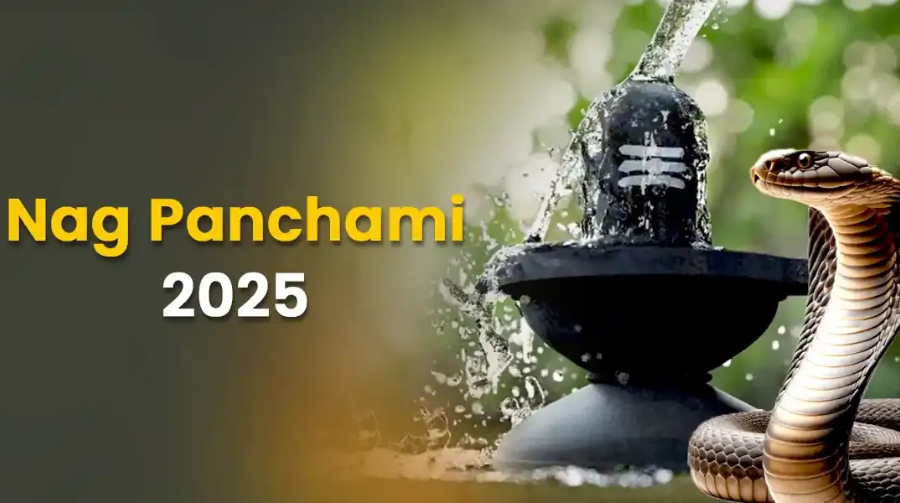Festivals
Nag Panchami 2025: Date & Puja Timing
Nag Panchami isn’t just about offering milk to snake idols. It’s a rare blend of mythology, ecology, and devotion—reminding us to respect life forms that often evoke fear. As Nag Panchami 2025 arrives on Tuesday, July 29, it offers another opportunity to step into the spiritual and symbolic layers of India’s serpent tradition.
When is Nag Panchami 2025?
- Date: Tuesday, 29 July 2025
- Panchami Tithi Begins: 11:24 PM, 28 July
- Panchami Tithi Ends: 12:46 AM, 30 July
- Puja Muhurat: 5:41 AM to 8:23 AM, 29 July (Duration: 2 hr 43 min)
In Gujarat, due to calendar variations, Nag Panchami will be observed on 13 August 2025.

Why Do We Worship Snakes?
At first glance, snake worship may seem primitive—but it’s deeply symbolic:
- Snakes represent the dual nature of creation: death and rebirth. They shed skin, symbolizing transformation.
- In Hinduism, Nagas are guardians of wealth and fertility, and protectors of nature.
- Serpents are intricately connected to Lord Shiva (Vasuki), Lord Vishnu (Sheshnag), and Manasa Devi.
In mythology, the Sarpa Yajna initiated by King Janamejaya was stopped by Sage Astika on this day—marking the beginning of Nag Panchami as a festival of peace and reconciliation with serpents.
Rituals and How It’s Observed Today
Pre-Puja Preparation:
- Bathe early before sunrise.
- Clean the home and puja area.
- Draw snake symbols on walls or floor using turmeric, kumkum, or cow dung paste.
Offerings Include:
- Milk (preferably symbolic rather than offered to live snakes)
- White lotus, rice grains, sandalwood
- Sweets like laddoos and jaggery
- Durva grass and Nagkalika flowers
Key Practices:
- Avoid digging, ploughing, or cutting trees—signifying respect for the underground world.
- Fast partially or fully (milk and fruits).
- Recite mantras such as “Om Namah Nagabhyo” or “Sarpa Raksha Stotra”.
Regional Flavors of Nag Panchami
Maharashtra & Karnataka:
Snake idols are placed in shrines, and women pray for their brothers’ long life. Folk songs like Nagoba Bhagat are sung.
Tamil Nadu & Kerala:
Naga abhisheka is done in temples like Mannarasala, with turmeric milk and sesame offerings.
Bihar & Bengal:
Women make clay serpents, worship them near anthills or ponds, and seek protection for their families.
Nepal:
In Kathmandu Valley, Nag Panchami kicks off festivals like Gai Jatra. Snake motifs are hung over doorways for protection.
Symbolism Beyond the Ritual
In modern times, Nag Panchami speaks to more than tradition. It is:
- A call for ecological awareness—protecting snakes from deforestation and urban harm.
- A reminder of coexistence, with creatures we often fear.
- A meditative symbol, especially in yoga, where kundalini energy is envisioned as a coiled serpent at the spine’s base.